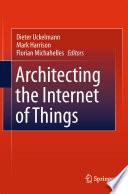
The Internet of Things
Enabling Technologies, Platforms, and Use Cases
As more and more devices become interconnected through the Internet of Things (IoT), there is an even greater need for this book,which explains the technology, the internetworking, and applications that are making IoT an everyday reality. The book begins with a discussion of IoT "ecosystems" and the technology that enables them, which includes: Wireless Infrastructure and Service Discovery Protocols Integration Technologies and Tools Application and Analytics Enablement Platforms A chapter on next-generation cloud infrastructure explains hosting IoT platforms and applications. A chapter on data analytics throws light on IoT data collection, storage, translation, real-time processing, mining, and analysis, all of which can yield actionable insights from the data collected by IoT applications. There is also a chapter on edge/fog computing. The second half of the book presents various IoT ecosystem use cases. One chapter discusses smart airports and highlights the role of IoT integration. It explains how mobile devices, mobile technology, wearables, RFID sensors, and beacons work together as the core technologies of a smart airport. Integrating these components into the airport ecosystem is examined in detail, and use cases and real-life examples illustrate this IoT ecosystem in operation. Another in-depth look is on envisioning smart healthcare systems in a connected world. This chapter focuses on the requirements, promising applications, and roles of cloud computing and data analytics. The book also examines smart homes, smart cities, and smart governments. The book concludes with a chapter on IoT security and privacy. This chapter examines the emerging security and privacy requirements of IoT environments. The security issues and an assortment of surmounting techniques and best practices are also discussed in this chapter.
- ISBN 13 : 1498761291
- ISBN 10 : 9781498761291
- Judul : The Internet of Things
- Sub Judul : Enabling Technologies, Platforms, and Use Cases
- Pengarang : Pethuru Raj, Anupama C. Raman,
- Kategori : Computers
- Penerbit : CRC Press
- Bahasa : en
- Tahun : 2017
- Halaman : 392
- Halaman : 392
- Google Book : https://play.google.com/store/books/details?id=cLI0DgAAQBAJ&source=gbs_api
-
Ketersediaan :
The book also examines smart homes, smart cities, and smart governments. The book concludes with a chapter on IoT security and privacy. This chapter examines the emerging security and privacy requirements of IoT environments.









